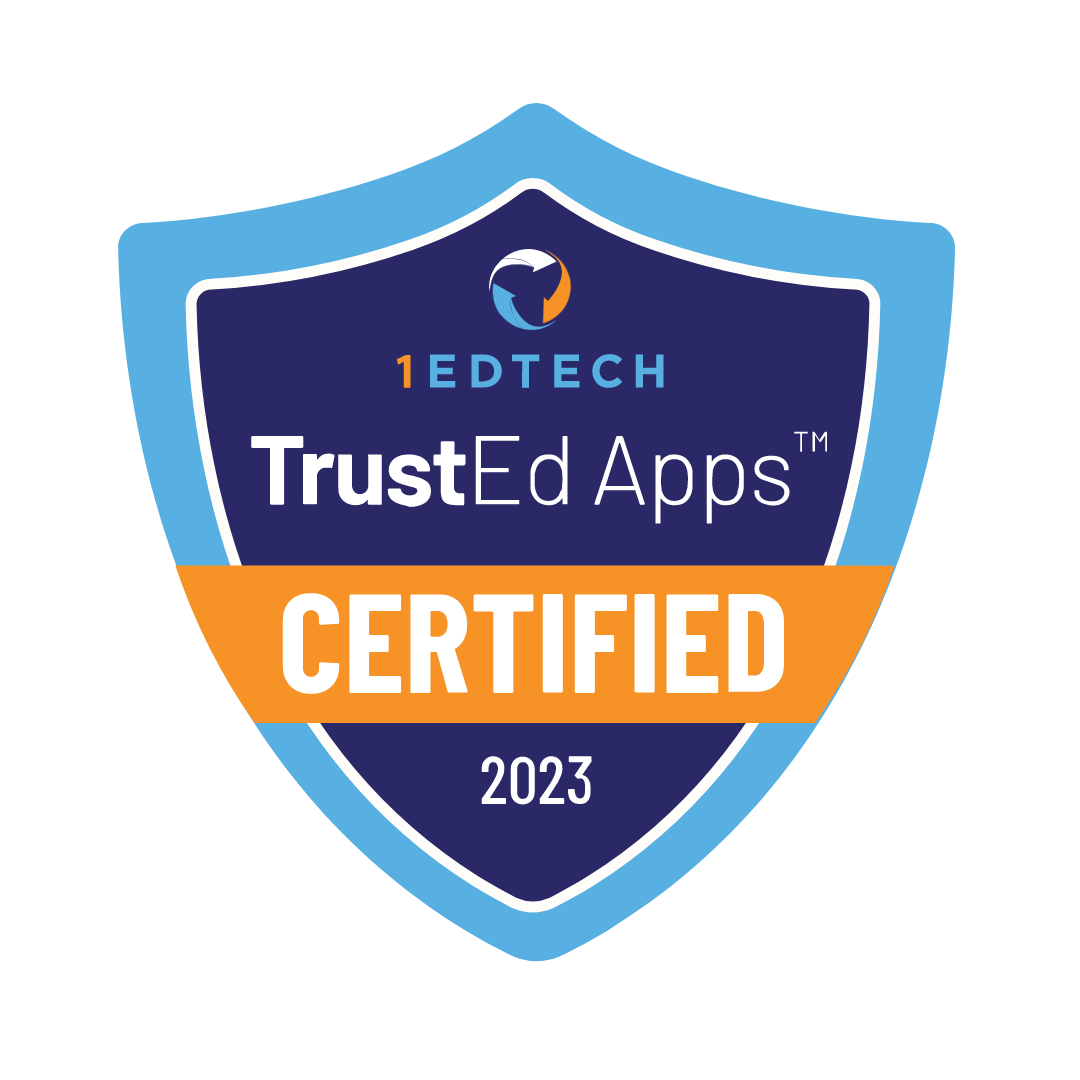Contents
- 1 Verständnis der Virtual Learning Academy
- 2 Virtuelles Lernen hat zwei entscheidende Vorteile: Flexibilität und Anpassungsfähigkeit.
- 3 Überblick über Programme und Kurse zum virtuellen Lernen
- 4 Navigieren durch die Plattformen der Virtuellen Lernakademie
- 5 Bewältigung von Herausforderungen in der virtuellen Bildung
- 6 Projektion der Zukunft der virtuellen Lernakademie Bildung
Eine Virtuelle Lernakademie ist ein Zentrum für Online-Bildung. Sie können dort zu jeder Zeit und an jedem Ort lernen. Sie bietet viele Programme und Kurse an. Sie ermöglicht den Zugang zu Lernmaterialien. Sie hilft bei der Interaktion mit Lehrern. Sie ermöglicht es, Aufgaben im eigenen Tempo zu erledigen. Stellen Sie sich vor, Sie verwandeln Ihr Zimmer in ein individuelles Klassenzimmer. Es hat alle Vorteile des traditionellen Lernens. Aber es erfordert keine Reisen oder starre Zeitpläne. Wie jede andere Art des Lernens birgt sie jedoch auch einige Herausforderungen. Sie müssen berücksichtigt werden. Nachdem wir nun wissen, was eine Virtuelle Lernakademie ist, wollen wir sie uns genauer ansehen.
In der Virtuellen Lernakademie nehmen die Studierenden an zahlreichen Kursen im Internet teil. Diese werden von zertifizierten Lehrkräften unterrichtet. Wir bieten Kernfächer und fortgeschrittene Wahlfächer an. Unsere Akademie bietet ein flexibles und aktives Umfeld. Sie ist so konzipiert, dass sie den unterschiedlichen Bedürfnissen der Schüler gerecht wird.
Verständnis der Virtual Learning Academy

Die Virtuelle Lernakademie ist für viele Schüler ein Rettungsanker. Es geht um Bildung. Das liegt an der Geografie, den Zeitplänen oder den Lernbedürfnissen. Die Plattform ist flexibel und innovativ. Die Lernenden sind nicht auf das Klassenzimmer beschränkt. Sie können sich mit ihren Kursen beschäftigen. Sie können dies mit ihren Lehrern und Mitschülern von fast überall aus tun. Sie brauchen nur eine Internetverbindung. Dies zeigt, dass moderne Bildung anpassungsfähig ist. Es unterstreicht auch, wie sie unterschiedliche Bedürfnisse befriedigt.
Betrachten Sie einen Raum. Die Schüler werden nicht durch feste Unterrichtszeiten behindert. Sie werden auch nicht von starren Lehrplänen aufgehalten. Genau das bietet die Virtual Learning Academy. Sie bietet individuelle Lernwege für jeden einzelnen Schüler. Die Wege entsprechen den Bedürfnissen der Schüler. Die Schüler können auf viele Kurse zugreifen. Die Kurse sind auf verschiedene Themen ausgerichtet. Sie haben Zugang zu einer reichen Bildungslandschaft. Es fördert das akademische Wachstum.
Außerdem sind die Online-Klassenzimmer interaktiv. Die Schüler können in Echtzeit mit ihren Lehrern sprechen. Sie können sich auch über andere Methoden austauschen. Das hilft beim Verständnis komplexer Themen. Es stellt sicher, dass die Schüler in jeder Phase ihrer Ausbildung die nötige Hilfe erhalten.
Bei der Virtual Learning Academy befinden sich die Schüler nicht nur in einem Klassenzimmer. Sie sind Teil eines globalen Netzwerks. Es verbindet kulturelle Vielfalt mit vielen Ansichten. Diese bereichern ihre Bildung.
Ein Beispiel: Ein Schüler lebt in einer ländlichen Gegend. Sie haben keinen Zugang zu fortgeschrittenen wissenschaftlichen Kursen. Sie können sich für einen Online-Physik- oder Biologiekurs anmelden. Das kann er bei der Virtual Learning Academy tun. Ein Schüler hat gesundheitliche Probleme. Sie können nicht am regulären Unterricht teilnehmen. Sie können ihre Ausbildung ohne Unterbrechung fortsetzen. Diese Flexibilität ist ein echter Fortschritt. Sie hilft vielen. Sonst hätten sie es schwer, eine gute Ausbildung zu erhalten.
Die Virtuelle Lernakademie befähigt die Schüler. Sie gibt ihnen die Möglichkeit, ihre Ausbildung auf ihre Bedürfnisse zuzuschneiden. Außerdem schafft sie einen unterstützenden und integrativen Ort zum Lernen.
Sehen wir uns nun an, wie diese Flexibilität und individuelle Anpassung unübertroffene Vorteile schafft. Die Schüler sehen sie im virtuellen Lernen.
Virtuelles Lernen hat zwei entscheidende Vorteile: Flexibilität und Anpassungsfähigkeit.

Eine virtuelle Lernakademie hat einen entscheidenden Vorteil. Sie bietet den Schülern Flexibilität. Der traditionelle Schulunterricht hat einen festen Zeitplan. Er schreibt vor, wann und wie lange die Schüler ihre Lernmaterialien nutzen. Im Gegensatz dazu ermöglichen virtuelle Lernplattformen den Schülern, ihr Lernen selbst zu gestalten. Sie können in ihrem eigenen Tempo vorankommen. Das bedeutet, dass die Schüler die Freiheit haben, sich mehr Zeit für schwierige Themen zu nehmen. Sie können sich schneller durch Themen arbeiten, die ihnen leicht fallen.
Diese Art des personalisierten Lernens kann Sie sehr unterstützen. Für die Schüler ist sie eine Bereicherung. Sie können so ihre Leidenschaften erforschen. Dies führt zu einer reichhaltigeren, besseren Bildung. Stellen Sie sich vor, Sie hätten mehr Zeit. Damit könnten Sie die Feinheiten eines Faches, das Sie lieben, herausfinden. Sie können dies tun, ohne sich zu hetzen. Das langsame Tempo traditioneller Klassenzimmer wird Sie nicht aufhalten. Diese Flexibilität fördert echte Begeisterung. Sie ist zum Lernen und Erforschen da.
Vorteile von Flexibilität und Anpassung
Vorteile: Höhere Zufriedenheit. Die meisten Schüler ziehen ihre Stundenpläne der traditionellen Schule vor. 78 % sind dieser Meinung. Der Grund dafür ist der persönliche Ansatz. Bessere akademische Leistungen. Das kommt vor. Dies geschieht, wenn die Schüler ihr Lernen selbst in die Hand nehmen. Sie arbeiten besser und engagieren sich mehr.
Dies ermöglicht auch ein individuelles Lernen. Es hilft bei vielen Lerntypen. Manche Schüler sind in einer strukturierten Umgebung am besten aufgehoben. Andere wiederum fühlen sich in einer lockeren, flexiblen Umgebung wohl. Die Virtual Learning Academy bietet beide Paradigmen. Jeder Schüler kann wählen, was für ihn am besten funktioniert.
Nehmen wir einen Schüler, der sich mit Mathematik schwer tut. Aber er hat ein großes Interesse an Geschichte. In einer traditionellen Umgebung hätte er das gleiche Tempo wie seine Mitschüler. Das könnte zu Frustration und Desinteresse führen. Das virtuelle Lernen ist jedoch flexibel. So können sie mehr Zeit mit Mathematik verbringen. Außerdem können sie Geschichte recherchieren. Das wird ihnen helfen, sich weiterzuentwickeln. Es wird auch ihre Leidenschaft für die akademische Welt wecken.
Außerdem bietet das Online-Lernen den Schülern einen guten Ausgleich. Sie können Sport treiben, Praktika absolvieren oder einen Teilzeitjob annehmen. Sie können diesen Aktivitäten nachgehen, während sie studieren. Das gibt ihnen die Möglichkeit, ihren Leidenschaften nachzugehen. Sie können dies tun, ohne ihre Ausbildung zu beeinträchtigen.
Dieses Gleichgewicht ist entscheidend. Die Schüler brauchen sie für ihre allgemeine Entwicklung. Es lehrt sie, ihre Zeit gut einzuteilen und Prioritäten zu setzen. Dies ist eine entscheidende Eigenschaft. Sie wird ihnen auch nach ihrer Schulzeit zugute kommen.
Die Schüler können ihre Stundenpläne an ihre Bedürfnisse anpassen. Sie können sich auch ihren Ambitionen anpassen. Das fördert die Unabhängigkeit und den Elan. Es bringt sie auf den richtigen Weg für den schulischen Erfolg. Es bereitet sie auch auf echte Herausforderungen vor. Sie werden sich diesen Herausforderungen stellen. Sie werden sich ihnen stellen, wenn sie ins Erwachsenenalter eintreten.
Es ermöglicht personalisierte Lernwege. Sie ermöglicht die Vereinbarkeit von Schule und Privatleben. Die Virtual Learning Academy befähigt die Schüler. Sie hilft ihnen, die Verantwortung für ihre Bildung zu übernehmen. Das formt sie zu vielseitigen Menschen. Sie werden für die Zukunft gerüstet sein.
Wir werden viele Online-Lernprogramme erklären. Wir werden auch über Kurse berichten. Sie bilden einen großen Wandteppich. Es gibt maßgeschneiderte Bildungsangebote. Diese zielen darauf ab, das Potenzial eines jeden Lernenden zu fördern.
Überblick über Programme und Kurse zum virtuellen Lernen

Die Virtual Learning Academy sieht jeden Schüler als einzigartig an. Sie schneidet ihre Angebote auf die unterschiedlichen Interessen und Talente zu. Das Angebot an Programmen und Kursen umfasst:
Kernfächer
Die Ausbildung eines Schülers besteht aus vier Teilen. Sie sind: Mathematik, Naturwissenschaften, Sprachwissenschaften und Sozialkunde. Entwickelt für ein umfassendes Verständnis. Es ist auch für einen guten Start gedacht.
Die Schüler können in jedes Kernfach eintauchen. Sie werden verschiedene Konzepte erforschen und sich in jedem Bereich Kompetenzen aneignen. Unterschiedliche Lernstile erfordern spezifische Materialien. So wird sichergestellt, dass alle Schüler das bekommen, was sie für ihren Erfolg brauchen.
Wahlfächer
Zusätzlich zu den Kernfächern bietet VLACS auch Wahlfächer an, die Spaß machen. Sie umfassen Musik, Kunst und Informatik. Sie umfassen auch Fremdsprachen. In diesen Kursen können die Schüler ihren Leidenschaften nachgehen. Sie decken Fächer ab. Diese Fächer stehen nicht auf dem üblichen Lehrplan. Die Schüler können ihren Interessen nachgehen. Sie können auch ihre Fähigkeiten ausbauen. Sie können dies in vielen Bereichen tun. Sie können zum Beispiel ein Instrument beherrschen. Oder man kann eine neue Sprache lernen.
Ein Schüler liebt zum Beispiel das Programmieren. Sie können einen Informatikkurs belegen. So können sie ihre Programmierkenntnisse verbessern. Ein anderer Schüler interessiert sich für Kultur und Sprache. Sie können Fremdsprachenkurse wählen. Dank dieser Flexibilität können die Studierenden ihre Ausbildung individuell gestalten. So können sie sich auf ihre Stärken und Ziele einstellen.
Auch das Angebot von Wahlfächern ist wichtig. Sie tragen der Bedeutung einer ganzheitlichen Entwicklung Rechnung. Die Schüler werden nicht nur akademisch bereichert. Sie werden auch in ihrer Kreativität gefördert. Das wirkt sich auf ihre gesamte Entwicklung aus.
Advanced Placement (AP)-Kurse
Highschool-Schüler am VLACS können AP-Kurse belegen. Damit können sie College-Punkte erwerben, bevor sie auf den Campus gehen.
Diese Kurse sind anspruchsvoll, aber bereichernd. Sie bereiten die Schüler auf das College vor. Außerdem zeigen sie ihre Fähigkeiten in bestimmten Fächern. AP-Kurse sind verfügbar. Sie zeigen das Engagement von VLACS. VLACS bietet Schülern die Möglichkeit, sich akademisch weiterzuentwickeln. Sie zeigen auch das Engagement von VLACS. Sie sind für die Hochschulreife von großer Bedeutung.
VLACS bietet eine breite Palette von Programmen und Kursen an. Sie zeigen sein Engagement. Sie vermitteln den Schülern eine breite Ausbildung. Die Programme gehen auch auf Ihre Interessen ein. Sie gehen auch auf Ihre Bestrebungen ein.

Wenn Sie mit dem virtuellen Lernen beginnen, müssen Sie sich mit den Plattformen vertraut machen. Das ist der Schlüssel für Ihre Ausbildung. Die Benutzeroberfläche ist Ihre erste Anlaufstelle. Sie dient als Tor zu einer riesigen Welt von Lernressourcen. Glücklicherweise ist die Nutzung virtueller Lernplattformen einfach. Sie sind darauf ausgerichtet, die Navigation zu erleichtern. Dies gilt sowohl für Schüler als auch für Lehrkräfte.
Benutzerfreundliche Schnittstellen
Stellen Sie sich vor, Sie melden sich bei einer virtuellen Lernplattform an. Eine saubere, übersichtliche Oberfläche empfängt Sie. Sie erleichtert die Nutzung vieler Tools und Ressourcen. Das ist es, was moderne Online-Lernplattformen versprechen. Das Design ist benutzerfreundlich. Es sorgt dafür, dass die Studierenden ihre Kurse leicht finden können. Sie können auch ihre Aufgaben finden. Sie können auch ihre Kommunikationskanäle finden. Sie werden sich nicht von unübersichtlichen oder komplexen Menüs erdrückt fühlen. Diese Einfachheit ist gewollt. Sie ermöglicht es den Menschen, sich auf den wichtigsten Aspekt zu konzentrieren: ihre Ausbildung.
So können Plattformen beispielsweise Kurse in Ordnern oder Kacheln organisieren. Die Schüler können diese anklicken, um Materialien zu erhalten. Stellen Sie sich das so vor, als hätten Sie einen gut organisierten Werkzeuggürtel zum Lernen. Alles hat seinen Platz und seinen Zweck.
Zugang zu Lernressourcen
Außerdem bieten diese Plattformen den Schülern sofortigen Zugang. Sie können sie nutzen, um viele interaktive Ressourcen zu erreichen. Zu den Ressourcen gehören E-Books und Vorlesungsvideos. Sie bieten auch Übungsaufgaben und Präsentationen. Sie sorgen für eine reichhaltige und dynamische Lernumgebung.
Ein großer Vorteil ist die Freiheit, die den Studierenden dadurch geboten wird. Sie können sich mit den Kursmaterialien in ihrem eigenen Tempo beschäftigen. Sie können dies tun, wann immer es ihnen passt. Die Lernenden können sich Vorlesungsaufzeichnungen ansehen. Sie können Studienführer herunterladen. Sie können an Online-Diskussionen teilnehmen. Sie können ihr Studium auf ihre Vorlieben abstimmen. Sie können es auch an ihren Zeitplan anpassen. Sie haben die Flexibilität, dies zu tun.
Diese Flexibilität ist für Studierende von unschätzbarem Wert. Sie jonglieren mit ihrer Arbeit oder anderen Verpflichtungen. Sie tun dies neben ihrer Ausbildung. Sie können jederzeit auf Lernressourcen zugreifen. So können sie Lerngelegenheiten wahrnehmen. Sie können dies tun, wenn sich die Situation ergibt, und sind nicht an starre Zeitpläne gebunden.
Ich habe mir einen Überblick über die benutzerfreundlichen Schnittstellen und Lernressourcen der virtuellen Plattformen verschafft. Es ist klar, dass diese digitalen Umgebungen einen umfassenden und flexiblen Bildungsansatz bieten sollen.
Bewältigung von Herausforderungen in der virtuellen Bildung

Der Übergang zur Online-Bildung erfordert eine Reihe einzigartiger Veränderungen. Dies gilt sowohl für Schüler als auch für Lehrer. Das Online-Lernen hat viele Vorteile. Aber es bringt auch einige Herausforderungen mit sich. Wir müssen sie angehen. Lassen Sie uns die Herausforderungen untersuchen. Wir werden auch praktische Wege zu ihrer Überwindung aufzeigen.
Technologische Hürden überwinden
In der virtuellen Bildung sind technologische Probleme an der Tagesordnung. Jüngste Studien zeigen, dass etwa 65 % der Studierenden mit technischen Problemen zu kämpfen haben. Sie haben diese Probleme beim Online-Lernen. Schlechtes Internet und Plattformprobleme stören das Lernen. Sie stören es sogar sehr.
Um diese Hürden zu überwinden, müssen Studierende und Lehrkräfte die grundlegenden Werkzeuge zur Fehlerbehebung beherrschen. Die Bereitstellung von Ressourcen ist der Schlüssel. Dazu gehören Video-Tutorials für Studierende. Sie sind für die Nutzung der Virtual Learning Academy gedacht. Auch die Bereitstellung von technischem Support kann den Schülern helfen. Sie können diese Ressourcen nutzen, um Probleme zu lösen. So wird verhindert, dass aus kleinen Problemen große werden. Auch die laufende Kommunikation über den technischen Support ist wichtig. Ein zuverlässiges Internet kann bedürftigen Schülern helfen, Zugang zu erhalten. Es kann ihnen helfen, Verbindungsprobleme zu lösen.
Akademische Leistung
Man hat die akademischen Leistungen in der Online-Schule mit denen in der traditionellen Schule verglichen. Dies ist ein Thema von großem Interesse. Die Debatte ist noch nicht abgeschlossen. Es geht darum, ob die Schüler online genauso gut abschneiden. Sie sind genauso gut wie die Schüler in traditionellen Klassen.
Jüngste Umfragen zeigen, dass 58 % der Eltern zufrieden sind. Sie sind zufrieden damit, wie sich ihre Kinder in der Online-Schule schlagen. Aber wir müssen zugeben, dass die Auswirkungen des Online-Lernens sehr unterschiedlich sein können. Sie hängt von verschiedenen Faktoren ab. Dazu gehört die Selbstkontrolle der Schüler. Dazu gehört auch die Interaktion mit dem Lehrer. Dazu gehören auch die Ressourcen für zu Hause.
Um diese Herausforderung zu meistern, müssen wir eine unterstützende Online-Lernumgebung schaffen. Regelmäßige Kontrollbesuche. In diesen Sitzungen treffen sich Lehrkräfte und Schüler zu einem persönlichen Gespräch. Sie können gezielte Unterstützung bieten. Sie können den Unterricht an die Bedürfnisse der Schüler anpassen. Dies geschieht mit Hilfe adaptiver Lerntechnologien.
Auswirkungen auf die psychische Gesundheit
Die Auswirkungen auf die psychische Gesundheit sind ein kritischer Aspekt. Er ist es wert, beachtet zu werden. Sie vergleicht die virtuelle Bildung mit der traditionellen Schulbildung. Der Übergang zum Fernunterricht hatte unterschiedliche Auswirkungen. Sie beeinträchtigt das psychische Wohlbefinden der Schüler. Soziale Isolation ist eine große Sorge.
Erhebungen zeigen, dass sich 40 % der Schüler isoliert fühlen. Sie fühlen sich so, wenn sie lange Zeit online lernen. Dies zeigt, dass die soziale Interaktion gefördert werden muss. Online-Klassen brauchen emotionale Unterstützung.
Es ist wichtig, die Schüler zu ermutigen, Kontakte zu knüpfen. Sie tun dies durch virtuelle Clubs, Online-Veranstaltungen und Foren. Diese Bemühungen sind der Schlüssel zur Bekämpfung der Isolation. Außerdem ist es wichtig, den Zugang zu Beratungsstellen und psychosozialen Einrichtungen zu ermöglichen. Sie können wichtige Unterstützung bieten. Sie helfen den Schülern, die Emotionen der Online-Schule zu bewältigen.
Der Umgang mit virtueller Bildung bringt viele Herausforderungen mit sich. Es geht um technische Unterstützung. Es geht auch um akademisches Engagement. Und es geht darum, die psychische Gesundheit in den Vordergrund zu stellen. Pädagogen können die Schüler unterstützen. Sie können ihnen helfen, im digitalen Klassenzimmer erfolgreich zu sein. Sie können dies tun, indem sie einen Unterricht gestalten, der auf alle eingeht und alle einbezieht.
Projektion der Zukunft der virtuellen Lernakademie Bildung
Die Technologie entwickelt sich rasant weiter. Wir können große Veränderungen in der Art und Weise erwarten, wie Online-Bildung funktioniert. Immer mehr Menschen haben schnelles Internet. Sie bekommen auch digitale Geräte. Daher werden die Schulen wahrscheinlich fortschrittliche Technologien einsetzen. Zu dieser Technologie gehört die virtuelle Realität. Dazu gehört auch die erweiterte Realität. Es gibt künstliche Intelligenz. Diese Technologien könnten die Erfahrungen der Schüler verändern. Sie könnten sie ansprechender machen. Der Unterricht könnte fesselnder und individueller sein.
Stellen Sie sich eine Geschichtsstunde vor. Die Schüler betreten eine virtuelle Simulation. Sie sehen, wie sich Geschichte ereignet. Sie sehen, wie sich die Ereignisse in 3D entfalten. Oder denken Sie an einen naturwissenschaftlichen Unterricht. Dort können die Schüler mithilfe von Augmented-Reality-Tools eine menschliche Zelle erforschen. Mit diesen Fortschritten kann das Lernen über die Klassenzimmer hinausgehen. Sie können über Bücher hinausgehen. Sie bieten den Schülern interaktive Erfahrungen. Diese Erfahrungen kommen vielen Lernstilen entgegen. Sie gehen auch auf die Vorlieben ein.
Technologische Fortschritte
Virtuelle Realität, Augmented Reality und KI werden sich vermischen. Sie werden das Lernen dynamischer machen. Außerdem können Pädagogen individuelle Lernwege für jeden Schüler erstellen. Sie werden diese Pfade auf die Stärken des Schülers abstimmen. Sie werden auch die Grenzen des Schülers berücksichtigen. Sie werden auch die Interessen der Schüler berücksichtigen. Das ist eine spannende Perspektive. Sie kann die Kluft zwischen Theorie und Praxis überbrücken. Sie hilft den Schülern, komplexe Ideen besser zu verstehen.
Außerdem kann die KI den Schülern ein individuelles Feedback geben. Sie verfolgt ihre Fortschritte. Sie findet die Bereiche, in denen sie zusätzliche Hilfe benötigen. Diese Art der maßgeschneiderten Betreuung ist von unschätzbarem Wert. Sie hilft den Studierenden, ihr volles Potenzial auszuschöpfen. Sie hilft ihnen, hervorragende Leistungen in ihrem Studium zu erbringen.
Erweiterter Zugang
Auch die Technik schreitet voran. Wir erwarten, dass der Zugang zur Bildung erleichtert wird. Das virtuelle Lernen hat das Spiel bereits verändert. Es hilft, Schüler in abgelegenen Gebieten oder solche mit besonderen Bedürfnissen zu erreichen. Wir können davon ausgehen, dass diese Fortschritte die Bildung verbessern werden. Sie wird integrativer und umfassender sein.
Früher waren Schüler durch ihren Wohnort eingeschränkt. Sie waren auch durch Behinderungen eingeschränkt. Jetzt werden sie mehr Zugang zu Ressourcen haben. Sie werden auch mehr Möglichkeiten haben. Diese Dinge waren bisher unerreichbar. Virtuelles Lernen wird nicht nur Türen öffnen. Es wird denen helfen, die eine traditionelle Ausbildung anstreben. Es wird auch Menschen helfen, die sich weiterbilden wollen. Sie können spezielle Kurse belegen. Diese Kurse werden ihre berufliche Laufbahn verbessern.
Die Zukunft des virtuellen Lernens ist im Grunde genommen aufregend. Die Technologie wird die Bildung inklusiv machen. Sie wird sie auch fesselnd und personalisiert machen. Sie wird dies für globale Lernende tun.
Der zukünftige Erfolg Ihres Kindes ist unser oberstes Ziel bei Legacy Online School. Besuchen Sie unser Website um die vielen Möglichkeiten der Legacy-Onlineschule zu erkunden.
Informieren Sie sich über die Online-Schulprogramme von Legacy:
Die Grundschule der Legacy Online School Programm legt die Messlatte hoch. Dies ist eine hochwertige Ausbildung. Wir sind bestrebt, Neugier zu wecken. Wir bemühen uns auch, die Kreativität zu fördern. Wir bieten einen soliden Lehrplan. Unterstützt werden wir dabei von qualifizierten Pädagogen.
Legacy Online Mittelschule bietet digitale Bildung. Sie ist für Schüler der Mittelstufe gedacht. Die Schule ist stolz darauf, Live-Online-Kurse anzubieten, die von zertifizierten Lehrern unterrichtet werden. Der Unterricht findet online und interaktiv statt.
Legacy Online High School ist eine einzigartige Methode des Online-Lernens, die speziell für Oberstufenschüler entwickelt wurde. Sie kombiniert synchrones Lernen, ein breites Spektrum an pädagogischen Methoden und einen Schwerpunkt auf Zugänglichkeit.
Die Legacy-Onlineschule bietet das Beste Lehrplan
Unser strenger Lehrplan gewährleistet, dass die Absolventen gut auf Universitäten und Arbeitsplätze in der ganzen Welt vorbereitet sind. Darüber hinaus verbinden unsere dynamischen virtuellen Clubs Studierende auf der ganzen Welt.





